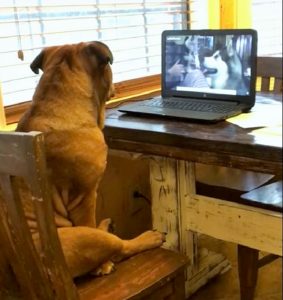
A year and a bit ago, I wrote about the importance of continuing education and peer review for a writer. Though in-person classes and critique groups are more difficult these days, challenging yourself to write is just as important. As with so many other areas of life, the internet can help with that!

It’s practically a cliché that writing is a lone activity. For the past few months, pretty much everything has been a lone activity. Classes and writing groups add the social dimension to writing, especially during quarantines, lockdowns, and isolations. I never met a boring writer! I meet interesting people with similar interests and (usually) similar world views. Thus there is the potential to develop new friendships as well as keeping in touch with current friends.
Why Classes?

Classes stimulate me to write in new directions. Yes, I write when I’m not in class, but it tends to get habitual, not to mention sporadic. An extra bonus of online classes is the ability to connect with teachers and fellow writers in all over the world. The variety of cultural perspectives is almost guaranteed to shine light on some of those new directions.

Classes are structured to make me write regularly. The VMFA studio classes meet regularly, with a variety of schedules to suit any writing lifestyle. Tuition is a real bargain, when one looks at dollars per hour of instruction! Just saying.
When I write regularly, I also submit regularly, at least six times per year. This leads to lots of rejections, but without submissions there are no acceptances. Submissions, thankfully, are almost entirely online.

Most of my life has been spent in classrooms, as a student and/or teacher. Classes are my natural environment, the one in which I thrive. Classmates and/or teachers praising my writing is extremely gratifying. Every time I get something published, it’s like an A on my report card or a star on my forehead. With more than 50 publications in literary journals and anthologies, my writing life is sufficiently star-studded to make me smile.

Why Critique Groups?

For most writers, self-editing is necessary but not sufficient to make the writing its best. That’s where critique groups and reading partners come in. Personally, I prefer a small group, four or five seeming ideal to me. The strength in numbers is that having multiple readers with different strengths can cover more of the territory: some might pick up on word choices and sentence structure, while others look more at the big picture of character and plot development.

There are some things that will help a group to be good. There are online resources and guidelines you might adopt. In my experience, here are a few basics:
- Set down the group guidelines in writing.
- Be clear about what types of writing will be acceptable (fiction, nonfiction, poetry, memoir, opinion essays, etc.) and stick to them.

- Be clear about how feedback will be given.
- Specify when the work is due, in what form, and what length.
- Decide what happens when someone misses a meeting:
- Are they expected to send comments on others’ work?
- Can they send work anyway?
- What if someone comes without having written anything?
- Stick to a regular meeting time and schedule.
- Get the group’s consensus when changing any of this.
- Keep the group small enough that everyone can have sufficient and equal time.
- Meet at least twice a month.

Online critique groups have additional logistics to consider.

- To avoid pandemonium, there should be a recognized leader for each meeting.
- The leader could be the meeting host, the original organizer, the most senior author, a regularly rotating position, or any other generally agreed person.
- Web meeting courtesy should be observed, including muting microphones when not speaking, avoiding distracting background action on video, and not having side conversations.
- Because all submissions will be digital, participants must share files in a format that can be opened and read by everyone.
Find Your Group

Here are just a few of the many options for classes online:

- Gotham Writers
- Writers Digest University
- Several courses are reviewed here by Become a Writer Today
- Virginia Museum of Fine Arts
- Coursera can connect you to online courses at universities around the world

Peer review groups or partnerships can be formed by anyone. Perhaps some of your friends from past classes or workshops would be up for regular critiquing. Social media is a great way to connect with other writers you may never have met in real life. There are also more formal groups:

- How to Find the Right Critique Group or Partner for You
- MasterClass has an overview of some of the best critique styles and groups online
- The Writing Cooperative




